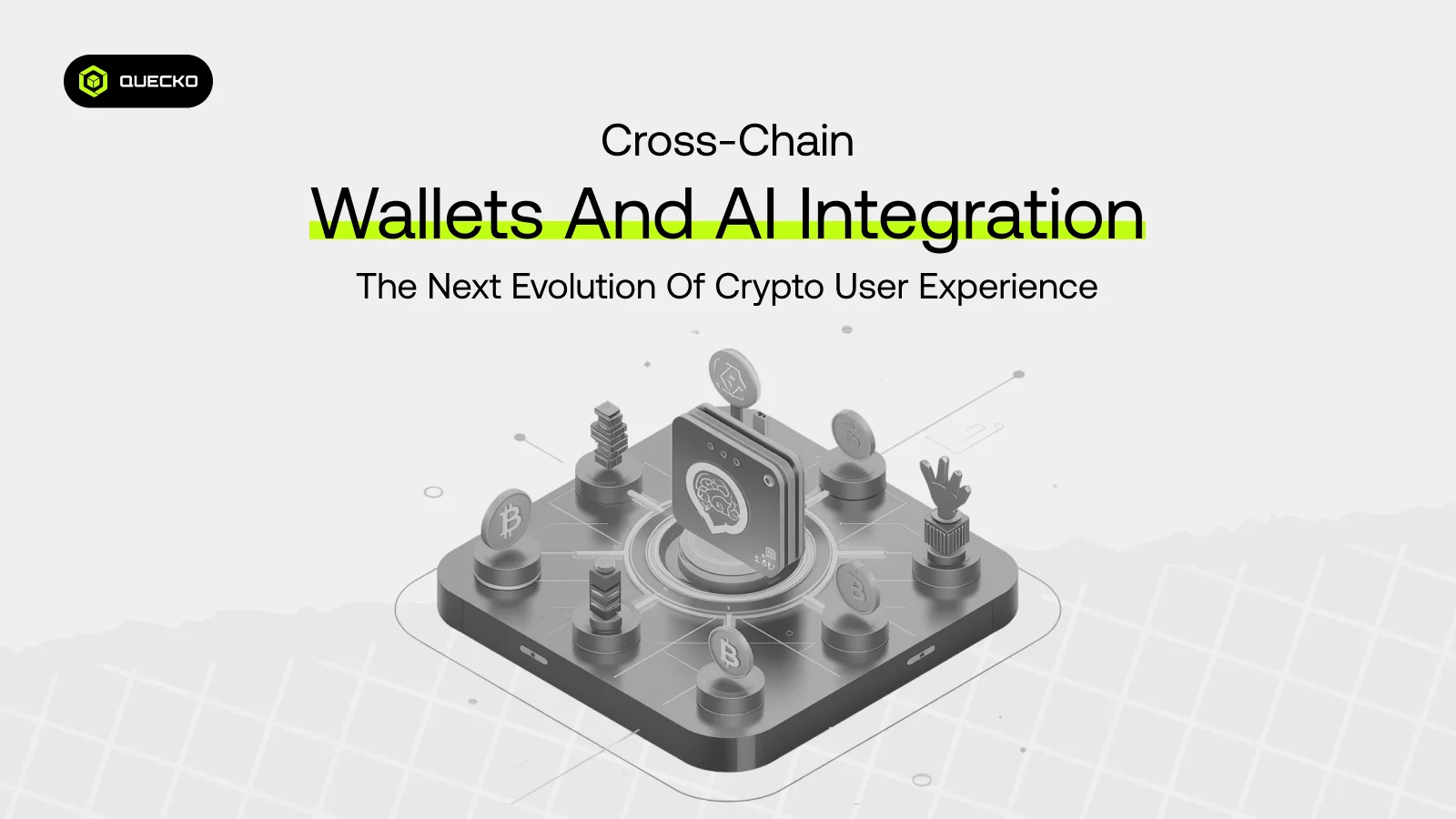Understanding Blockchain Architecture: The Backbone of Decentralized Systems
Unlock the secrets of blockchain architecture and fuel your understanding of decentralized systems. Jump into the future of technology today!

Blockchain technology is revolutionizing everything from cryptocurrencies to supply chain management. But what’s the secret sauce behind it all? This technology’s core lies an intricate architecture—a brilliant framework designed for ultimate security, transparency, and decentralization.
Ready to explore? In this blog, we’re diving into the fascinating details of blockchain architecture. We’ll break down its key components, unveil its multi-layered structure, highlight the different types, and showcase real-world applications that are changing the game.
Join us on this captivating journey to uncover the secrets behind one of the most groundbreaking innovations of our time. Whether you’re a tech guru or just curious about the buzz, there’s something here to spark your interest!
What is Blockchain Architecture?
Blockchain architecture refers to the design and structure of a blockchain network. It is the foundation that enables decentralized, secure, and transparent transactions without intermediaries. Unlike traditional databases, blockchain is distributed across multiple nodes, ensuring no single point of failure.
Key Characteristics of Blockchain Architecture:
1- Decentralization:
Decentralization is a fundamental principle of blockchain technology. Unlike traditional systems where a single central authority controls the network, blockchain operates on a decentralized network of nodes (computers). Each node holds a copy of the blockchain and participates in validating and recording transactions. This decentralized structure has several benefits:
- Resilience: The network is less vulnerable to failures or attacks.
- Reduced Censorship: Harder for any single entity to censor or manipulate the network.
- Empowerment: Users have more control over their data and transactions
2- Transparency:
Transparency in blockchain refers to the visibility of transactions to all participants within the network. Each transaction is recorded on a public ledger, which is accessible to everyone. This transparency offers several advantages:
- Accountability: All actions are visible, making it easier to hold parties accountable for their actions.
- Auditability: Transactions can be easily verified and traced, simplifying audits and compliance checks.
- Trust: The open nature of the ledger fosters trust among participants, as they can independently verify the authenticity of transactions.
3- Immutability:
Immutability means that once data is recorded on the blockchain, it cannot be altered or deleted. This characteristic is crucial for maintaining the integrity and trustworthiness of the blockchain. The benefits of immutability include:
- Data Integrity: Ensures that records remain accurate and unchanged over time.
- Historical Accuracy: Provides a reliable history of all transactions, which is essential for auditing and accountability.
- Security: Prevents tampering and fraud, as malicious actors cannot alter transaction records once they are added to the blockchain.
4- Security:
Blockchain employs advanced cryptographic techniques to secure the network from tampering and unauthorized access. These security measures include:
- Hashing: Detects any tampering with blocks.
- Digital Signatures: Ensures only rightful owners can authorize transactions.
- Consensus Mechanisms: Prevents malicious actors from controlling the network.
- Encryption: Protects sensitive information from unauthorized access.
What Makes Up the Backbone of Blockchain Technology?
To truly grasp how blockchain technology operates, it’s essential to break down its core components. These elements collectively form the backbone of blockchain, enabling it to deliver on its promises of security, transparency, and decentralization.
1. Nodes :
Nodes are the participants in a blockchain network. They can be:
- Full Nodes: Store the entire blockchain and validate transactions.
- Light Nodes: Store only essential data and rely on full nodes for verification.
- Miners/Validators: Participate in the consensus process to add new blocks.
2. Blocks :
A block is a container for data. It consists of:
- Header: Contains metadata like the previous block’s hash, timestamp, and nonce.
- Transactions: A list of validated transactions.
- Hash: A unique cryptographic fingerprint of the block.
3. Chain :
Blocks are linked together in a chain using cryptographic hashes. Each block contains the hash of the previous block, creating an immutable sequence.
4. Consensus Mechanisms :
Consensus mechanisms ensure agreement among nodes. Popular methods include:
- Proof of Work (PoW): Miners solve complex puzzles to validate transactions (e.g., Bitcoin).
- Proof of Stake (PoS): Validators are chosen based on the number of tokens they hold (e.g., Ethereum 2.0).
- Other Mechanisms: Delegated Proof of Stake (DPoS), Practical Byzantine Fault Tolerance (PBFT), etc.
5. Cryptography :
Another key component of blockchain architecture is cryptography, which plays a crucial role in ensuring the security and authenticity of transactions added to a blockchain. Let’s delve into its main elements:
- Public and Private Keys: Two essential terms in blockchain cryptography.
- Public Key: Acts like a wallet address, where people can send information or assets.
- Private Key: Similar to the password for your bank account, it allows access to your data and funds on the blockchain.
- Public-Private Key Cryptography: Utilizes distinct keys for encryption and decryption.
- Encryption: The public key encrypts data, making it accessible only to the intended recipient.
- Decryption: The private key decrypts data, ensuring only the owner can access it.
- Addressing System: Cryptography helps in creating a secure and unique addressing system for the decentralized ledger.
- Smart Contracts: Private keys are essential for authorizing certain actions on smart contracts, adding an extra layer of security.
6. Decentralized Ledger:
A decentralized ledger, also known as a distributed ledger, is a fundamental concept in blockchain technology. It functions as a type of decentralized database, storing a series of blocks that constitute the blockchain. Here’s a closer look at its features:
- Chain of Blocks: The ledger spans from the genesis block to the most recent block, creating an unbroken chain.
- Unique Metadata: Each block is linked to its predecessor with unique metadata, rendering them immutable and resistant to alteration.
- Cryptographic Hash of Previous Block: Ensures continuity and security of the chain.
- Transaction Data: Records the details of the transactions included in the block.
- Timestamp: Marks the exact time when the block was created, adding to its integrity.
What Are The Building Blocks of Blockchain?
Blockchain architecture is a sophisticated structure that can be divided into four distinct layers. Each layer plays a vital role in ensuring the smooth operation and security of the blockchain network. Let’s delve deeper into each of these layers:
1. Application Layer
The application layer is the user-facing tier, where decentralized applications (dApps) and wallets operate. This layer is what users interact with directly.
- User Interaction: Provides a seamless and intuitive interface for users to interact with the blockchain.
- Examples: Cryptocurrency wallets, decentralized finance (DeFi) platforms, gaming dApps, supply chain management tools.
- Accessibility: Makes blockchain technology accessible and user-friendly to the general public.
2. Protocol Layer
The protocol layer defines the rules and standards that govern the blockchain network.
- Consensus Mechanisms: Includes algorithms like Proof of Work (PoW) and Proof of Stake (PoS) used to validate and verify transactions.
- Network Security: Establishes clear rules and guidelines to ensure the network’s integrity and coherence.
- Standardization: Ensures all nodes in the network operate in a synchronized and orderly manner.
3. Network Layer
The network layer handles the peer-to-peer communication between nodes, ensuring that data is properly propagated across the network.
- Peer-to-Peer Communication: Facilitates direct communication between nodes to share data and validate transactions.
- Data Propagation: Ensures that all nodes have access to the same information and can independently verify the state of the blockchain.
- Fault Tolerance: Achieves resilience against attacks and network failures.
4. Infrastructure Layer
The infrastructure layer includes the physical and virtual resources that support the blockchain network.
- Hardware Components: Includes servers, storage devices, and network interfaces.
- Software Elements: Comprises operating systems and blockchain clients.
- Nodes: Individual devices or servers that participate in the blockchain network.
- Foundational Support: Provides the necessary resources for the blockchain to function efficiently and reliably.
What Are the Types of Blockchain Architectures?
Blockchain architectures can be categorized based on their accessibility and control. Here are the different types, along with some key details about each:
1. Public Blockchain
- Open to Anyone: Public blockchains are open networks where anyone can participate without any restrictions.
- Fully Decentralized: These blockchains operate in a completely decentralized manner, with no central authority controlling the network.
- Examples: Prominent examples of public blockchains include Bitcoin and Ethereum, which allow users to engage in transactions and smart contracts openly and transparently.
2. Private Blockchain
- Restricted Access: Private blockchains are restricted to specific participants who have been granted permission to join the network.
- Centralized Control: Unlike public blockchains, private blockchains are controlled by a single organization or consortium, allowing for more control and privacy.
- Examples: Examples of private blockchains include Hyperledger and R3 Corda, which are often used by enterprises for internal processes and secure transactions.
3. Hybrid Blockchain
- Combination of Public and Private Features: Hybrid blockchains incorporate elements of both public and private blockchains, offering a balance between openness and controlled access.
- Flexibility and Scalability: These blockchains provide the flexibility to customize access permissions and the scalability to handle a large number of transactions efficiently.
- Example: Dragonchain is an example of a hybrid blockchain, providing a mix of public and private chain capabilities to meet various business needs.
4. Sidechains and Layer 2 Solutions
- Sidechains: These are separate blockchains that are connected to the main chain, allowing for the transfer of assets and data between the chains. Sidechains enable experimentation and customization without affecting the main blockchain.
- Layer 2 Solutions: Layer 2 solutions, such as the Lightning Network, are built on top of the main blockchain to enhance scalability and speed. They enable faster and cheaper transactions by processing them off the main chain while still benefiting from the security of the main blockchain.
By understanding these different types of blockchain architectures, we can appreciate the versatility and adaptability of blockchain technology in meeting various needs and challenges. Each type offers unique features and benefits, making blockchain suitable for a wide range of applications, from public, transparent networks to private, controlled environments and innovative scalability solutions.
How Blockchain Architecture Enhances Security
Blockchain technology is revolutionizing the way we approach data security. The security of blockchain stems from its robust architecture, which incorporates several key elements:
1. Cryptography:
- Hashing: Blockchain uses cryptographic hashing functions to encode data into a fixed-size string of characters, which is unique to the original data. Each block contains the hash of the previous block, creating a chain. Any alteration in the data would change the hash, making tampering evident.
- Digital Signatures: Transactions are signed with private keys, ensuring that only the owner of the private key can initiate a transaction. This adds a layer of authentication and non-repudiation, making it difficult for unauthorized parties to alter the data.
2. Decentralization:
- Distributed Network: Blockchain operates on a peer-to-peer network, where each node (participant) maintains a copy of the entire blockchain. This decentralization eliminates single points of failure and reduces the risk of a successful attack. Even if one node is compromised, the network remains secure.
- Consensus Mechanisms: Various consensus algorithms (such as Proof of Work, Proof of Stake, and Practical Byzantine Fault Tolerance) are employed to validate transactions. These mechanisms ensure that the majority of nodes agree on the validity of the transactions, preventing fraudulent activities.
3. Immutability:
- Permanent Records: Once data is recorded on the blockchain, it is nearly impossible to alter. Each block is linked to the previous one through cryptographic hashes, creating a secure and unchangeable ledger. This immutability prevents tampering and ensures the integrity of the data.
- Transparent Audit Trail: The immutable nature of blockchain provides a transparent and verifiable audit trail. All transactions are recorded chronologically and can be traced back to their origin, enhancing accountability and trust.
The unique combination of cryptography, decentralization, and immutability in blockchain architecture makes it a powerful tool for enhancing security. As technology continues to evolve, blockchain is poised to play a crucial role in safeguarding data and building trust in digital transactions.
Challenges in Blockchain Architecture
While blockchain technology offers groundbreaking benefits like decentralization, transparency, and security, it also faces significant challenges that need to be addressed for widespread adoption. Here’s a closer look at the key hurdles:
- Scalability:Blockchain networks often struggle with limited transaction throughput. For instance, Bitcoin processes only 7 transactions per second (TPS), whereas Visa handles about 24,000 TPS. This disparity affects blockchain efficiency, making it slower than traditional systems.
- Problem: Blockchain networks often struggle with limited transaction throughput. For example, Bitcoin processes only 7 transactions per second (TPS), while Visa handles around 24,000 TPS. This limitation affects the efficiency of blockchain networks, making them slower than traditional systems.
- Solution: To address this, various scaling solutions are being developed, such as Layer 2 protocols (e.g., Lightning Network) and sharding. These innovations aim to increase the number of transactions processed without compromising security.
2. Energy Consumption:
Many blockchains use Proof of Work (PoW) mechanisms, which require substantial computational power. This leads to high energy consumption, raising environmental concerns about the sustainability of blockchain technologies.
- Problem: Many blockchains use Proof of Work (PoW) mechanisms, which require significant computational power. This high energy consumption raises concerns about the environmental impact of blockchain technologies.
- Solution: Transitioning to more energy-efficient consensus mechanisms, like Proof of Stake (PoS) or hybrid models, can significantly reduce energy consumption. Additionally, optimizing mining hardware and using renewable energy sources can further mitigate environmental impact.
3. Interoperability:
Different blockchains often have difficulty communicating with one another. This lack of interoperability can hinder the seamless transfer of data and assets across various blockchain networks.
- Problem: Different blockchains often have difficulty communicating with each other. This lack of interoperability can hinder the seamless transfer of data and assets across various blockchain networks.
- Solution: Developing cross-chain communication protocols and interoperability platforms (e.g., Polkadot and Cosmos) can facilitate interaction between different blockchains. These solutions enable the exchange of information and assets, promoting a more connected blockchain ecosystem.
4. Regulation:
Legal and compliance issues vary widely across different jurisdictions. These regulatory differences can create challenges for blockchain adoption and implementation, as companies must navigate a complex and evolving legal landscape.
- Problem: Legal and compliance issues vary widely across different jurisdictions. These regulatory differences can create challenges for blockchain adoption and implementation, as companies must navigate a complex and evolving legal landscape.
- Solution: Establishing clear and harmonized regulatory frameworks can provide legal certainty and foster innovation. Collaboration between regulators, industry stakeholders, and policymakers is essential to create a conducive environment for blockchain technology.
Blockchain offers numerous benefits, and addressing these challenges is crucial to fully realize its potential. Improving scalability, reducing energy consumption, enhancing interoperability, and clarifying regulations are essential steps for the future of blockchain technology.
Future Trends in Blockchain Architecture
The future of blockchain architecture is promising and evolving in several key areas:
1. Evolving Consensus Mechanisms:
The shift from Proof of Work (PoW) to more energy-efficient Proof of Stake (PoS) mechanisms is gaining momentum:
- Shift from PoW to PoS: The transition from energy-intensive Proof of Work (PoW) to more energy-efficient Proof of Stake (PoS) mechanisms is gaining momentum.
- Energy Efficiency: PoS significantly reduces the computational power required, leading to lower energy consumption.
- Scalability: PoS can handle more transactions per second, improving the overall scalability of blockchain networks.
- Security: Enhanced security features in PoS make it more resistant to certain types of attacks compared to PoW.
2. Integration with AI and IoT:
Integrating AI and IoT with blockchain enhances automation and data integrity:
- Automation: Integrating AI with blockchain can automate complex processes, such as smart contracts and predictive analytics.
- Enhanced Data Analysis: AI algorithms can analyze large datasets on the blockchain, providing valuable insights and improving decision-making.
- IoT Connectivity: Blockchain can enhance the security and data integrity of IoT devices, creating a more secure and interconnected ecosystem.
- Real-time Monitoring: AI and IoT integration allows for real-time monitoring and management of assets, improving efficiency and reducing risks.
3. Quantum Computing:
Quantum computing has the potential to disrupt current cryptographic methods used in blockchain:
- Cryptographic Disruption: Quantum computing has the potential to break current cryptographic methods used in blockchain.
- Quantum-resistant Algorithms: Developing quantum-resistant cryptographic algorithms is essential to protect blockchain networks from future quantum attacks.
- Enhanced Processing Power: Quantum computing can significantly increase the processing power, enabling faster and more complex computations on the blockchain.
4. Enterprise Adoption:Increased use of blockchain in various industries highlights its potential:
- Finance: Increased use of blockchain in financial services for secure transactions, fraud prevention, and transparent auditing.
- Healthcare: Blockchain can enhance patient data security, interoperability, and streamline medical records management.
- Logistics: Blockchain improves supply chain transparency, traceability, and efficiency, reducing fraud and counterfeiting.
- Smart Contracts: Enterprises are adopting smart contracts for automated and self-executing agreements, reducing the need for intermediaries and improving operational efficiency.
The future of blockchain architecture holds immense potential with these evolving trends. Holding new consensus mechanisms, integrating AI and IoT, preparing for quantum computing, and increasing enterprise adoption will drive the next wave of innovation in blockchain technology.
Conclusion
In my view, blockchain architecture is truly the unsung hero of decentralized systems. It offers game-changing security, transparency, and efficiency that we simply can’t ignore. As this technology evolves, it’s going to revolutionize industries left and right—changing how we handle data and transactions forever.
Whether you’re a developer jumping into the nuts and bolts, an entrepreneur looking for the next big opportunity, or just an enthusiast curious about the future, understanding blockchain architecture is a must. It’s the key to unlocking tomorrow’s tech landscape. So, stay curious, keep learning, and get ready to ride the wave of innovation!
Date
8 months agoShare on
Related Blogs

How Blockchain Is Rewiring Corporate Banking
1 day ago

AI And Blockchain Synergy: Building Smarter & Transparent Systems
3 days ago

The Quantum Leap: How Blockchain Must Evolve to Stay Secure
6 days ago

The Future of Web3 UX Is Here: AI Meets Cross-Chain Wallets
14 days ago








